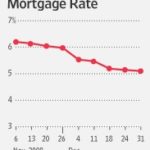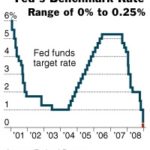
The Big Question
Should you pay points when getting your mortgage?
It’s a question that does not have one right answer (even though some people are convinced otherwise). To be able to determine if you should pay points, I think there are a few things you must know. This post is intended for you to determine what points are and most importantly if it makes sense for you to pay them. Don’t listen to anyone else. Make the decision for yourself. It’s easy once you understand it. Ready?… Ok, here we go!
What Are Points Anyway?
First thing’s first. You need to know what points are. Points are often referred to as:
- Origination Fee
- Broker Fee
- Discount Fee
- Buy Down Fee
Simply put, a point is one of two things (with few exceptions):
- Compensation to the lender originating a loan.
- A fee to secure a below market interest rate.
How Do Lenders Get Paid?
This is another post in itself, but it’s important to understand before we move forward. Mortgage bankers and brokers both get paid two different ways. Often times it’s actually a combination of the two.
1. Fees that are “closing costs” on the front end of the loan (also found on the good faith estimate).
- Origination Fee
- Processing Fee
- Application Fee
- Credit Report Fee (even though it’s really illegal to overcharge for it)
- Commitment Fee
2. Servicing Release Premium From The Bank.
- This is directly tied to the interest rate that you pay on the loan.
- It is also called – Yield Spread Premium (YSP).
- This is what allows lenders to charge ‘No Points’ and still make money. Trust me, they are not working for free.
You Choose To Pay A Lender One Way or The Other
When borrowing money from a bank, you can structure the deal to do one of the following:
- Get a market rate and pay a 1% origination fee.
- Get a below market rate and pay discount points (and possibly an origination fee).
- Get an above market rate and pay no origination fee (but look out for other front end fees as listed above).
Tricks Some Lenders Play
 I’m not a negative guy – but I have to disclose some dirty little tricks I’ve seen other lenders around town do. Some lenders will propose a ‘No Points’ loan but then charge a $600 commitment fee or an extremely high processing fee. I’m not against ‘No Points’ loans, but make sure that when you’re comparing paying points vs. not paying points that you’re comparing similar deals.
I’m not a negative guy – but I have to disclose some dirty little tricks I’ve seen other lenders around town do. Some lenders will propose a ‘No Points’ loan but then charge a $600 commitment fee or an extremely high processing fee. I’m not against ‘No Points’ loans, but make sure that when you’re comparing paying points vs. not paying points that you’re comparing similar deals.
If you’ve got a tricky situation and need a second opinion – please, feel free to call me. I look at this sort of thing every day. You can’t exactly fool a certified mortgage planning professional.
All Things Said, How Do You Know Which Makes Sense?
Here’s The Process:
Step One
In order for you to really know if it makes sense, you need to determine the answers to a couple of questions.
- How long do you plan to live in this home?
- How long do you plan to have this loan?
Step Two
Once you’ve determined how long you’ll be in the property, you’ve now determined your ‘Break Even Point’ (we will get there, just hold on).
Now you need to get two different good faith estimates with interest rates and monthly payments.
- One with a 1% origination.
- One with no points (and no other junk fees).
Step Three
Determine the difference between the two monthly payments. For example:
1. 30 Year Fixed Mortgage. Paying a 1% origination fee.
Example Rate is 6%. Loan Amount of 200,000.
Points Payment is $1,199 per month.
2. 30 Year Fixed Mortgage. Paying no points. No junk fees.
Example Rate is 6.25%. Loan Amount of 200,000
No Points Payment is $1,231 per month.
The difference between the two payments is: ($1,199 – $1,231) = $32
Step Four
Determine your break even point between the two.
If you paid points, it cost you $2,000 in this example. You also saved $32 per month. You determine your break even point by doing the following:
(Cost of Points) / (Monthly Savings By Paying Points) = Break Even Point (in months)
Example: $2,000 / $32 = 62 Months
Step Five – Final Step!
Go back to step one. If you said that you would be selling or refinancing your home before 62 months, you should go with the ‘no points’ option. If you think you’ll have the loan for longer than that, you should pay the 1% origination point. Easy enough?
Work With a Professional
As you can see, there is no right or wrong answer here. What does really get under my skin is when someone advises you to go one direction or the other before doing a break even analysis. I’m not going to point any fingers, but if you’re buying a home in Ames, Iowa (again, not pointing fingers) – but it is a market STANDARD to do no points loans.
I swear, potential clients seem convinced that their Ames lender is doing the loan for free. Realtors can often be firm on the ‘No Points’ loans in these situations. I respect that. All I ask is that you act as an educated consumer. You now understand how to determine what makes sense and what doesn’t. You’re not a nationwide statistic and you shouldn’t be treated like one (the average home loan is roughly 4 years). You know you better than anyone else (including your Realtor). Do the math, and tell me what makes sense.
How I Work
Every client I work with goes through this break even analysis to determine what makes most sense with their long term goals. It’s ultimately your decision. Either way, I’ll be very clear on how I get paid. No black box here. Transparency is king. Welcome to the new standard 🙂
The bar has been raised. Are you in?
If you’d like to have me take a closer look at your loan – I’d be glad to help! Remember, I do this every day of my life. You only have to worry about it a few times in a lifetime. I’m here to answer questions.
Photo Kudos On Original Sign Photo
Photo Kudos On Rabbit In The Hat









